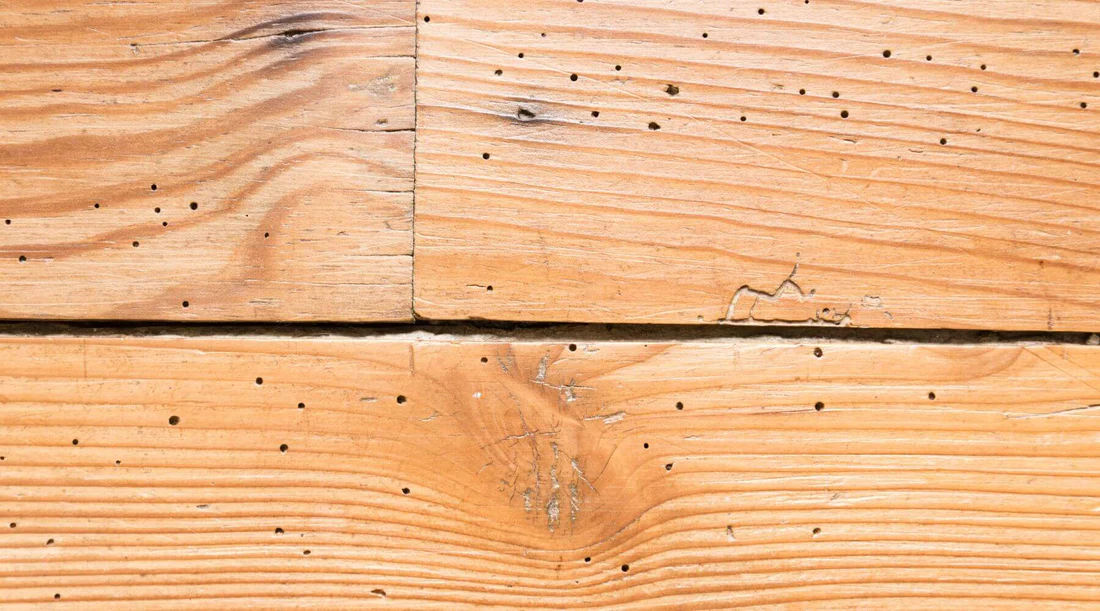If you’ve discovered small holes in your wooden furniture or beams, or noticed crumbling wood around your home, you may be facing a woodworm infestation. These tiny pests can silently damage the wood, weakening the structure of your property over time. In this article, we’ll explain how to identify woodworms, why they’re harmful, and how to prevent and treat them effectively. For expert assistance with woodworms, visit Woodworms.
What Are Woodworms?
Woodworms are the larvae of wood-boring beetles. These beetles lay their eggs in cracks or crevices in wooden surfaces. Once the eggs hatch, the larvae burrow into the wood to feed, causing the wood to weaken. The larvae stay inside the wood for months or even years before emerging as adult beetles, leaving behind small holes and causing extensive damage.
The damage from woodworms can be severe, as the larvae hollow out the wood, making it soft and unstable. The infestation often goes unnoticed until the wood becomes structurally weak, which can lead to dangerous situations if not addressed in time.
How to Identify Woodworm Damage
Spotting woodworm damage early is crucial to preventing further issues. Here are some common signs of woodworm infestations:
- Exit Holes: Adult beetles emerge from the wood, leaving behind small round holes, typically 1-2mm in diameter.
- Powdery Frass: The larvae produce fine dust or frass as they tunnel through the wood. This dust often collects around the exit holes or near infested wood.
- Weakened or Softened Wood: Over time, wood infested by woodworms becomes soft, weak, and crumbly. This can lead to wood breaking apart with minimal pressure.
- Visible Beetles: If you spot small, brown or black beetles flying around, it could be a sign of a woodworm infestation.
Why Woodworms Are Dangerous
Woodworms may be small, but they can cause extensive damage to your home. As the larvae tunnel through the wood, they weaken its structure, causing it to lose strength. This is particularly dangerous for load-bearing beams or flooring, which may eventually collapse under weight. In addition, the larvae live deep within the wood, making the damage difficult to detect until it’s too late.
If left untreated, woodworms can spread to different areas of your home, causing damage to multiple wooden surfaces and structures. The longer the infestation is allowed to continue, the greater the risk to the safety and stability of your property.
How to Prevent Woodworm Infestations
The best way to deal with woodworms is to prevent them from infesting your home in the first place. Here are some steps to protect your property:
- Keep Moisture Levels in Check: Woodworms thrive in damp conditions, so it’s essential to control the moisture levels in your home. Ensure that basements, attics, and crawl spaces are well-ventilated. Use dehumidifiers to maintain a dry environment.
- Treat Wooden Surfaces: If you’re installing new wood or replacing old furniture, treat the wood with a preservative. This will help protect it from future woodworm infestations.
- Regular Inspections: Regularly inspect wooden structures and furniture for signs of woodworm damage. Early detection can help you tackle the problem before it becomes a serious issue.
Effective Treatments for Woodworms
If you’ve discovered a woodworm infestation in your home, don’t panic. There are several treatments available to eliminate the pests and prevent further damage:
- Chemical Insecticides: The most effective way to treat woodworms is by using insecticidal chemicals. These chemicals penetrate the wood, killing the larvae and adult beetles. They can be applied with a brush or spray.
- Fumigation: If you have a large infestation, fumigation may be necessary. This involves sealing off the affected area and introducing a gas that kills the woodworms and adult beetles.
- Boric Acid: For a safer, natural treatment, boric acid can be used. It’s less toxic than chemical insecticides and can effectively eliminate woodworms.
- Professional Pest Control: If the infestation is extensive, or if you’re unsure how to treat it, it’s best to consult a professional pest control service. Experts have the necessary tools and experience to safely and effectively handle the situation.
Repairing the Damage Caused by Woodworms
Once you’ve treated the woodworm infestation, the next step is repairing the damage caused by the larvae. For small holes, you can fill them with wood filler or epoxy. However, if the wood has been significantly weakened, you may need to replace the affected sections entirely.
If the infestation has affected load-bearing wooden structures, it’s best to hire a professional carpenter or contractor. They can assess the extent of the damage and ensure the repairs are done correctly.
Conclusion
Woodworms can cause extensive damage to your home if left unchecked, but with early detection, preventive measures, and proper treatment, you can protect your property from these pests. Regular inspections, maintaining dry conditions, and treating wood with preservatives are key to preventing infestations. If you find yourself dealing with a woodworm infestation, there are several effective treatments available. For expert advice and help with woodworms, visit Woodworms.

